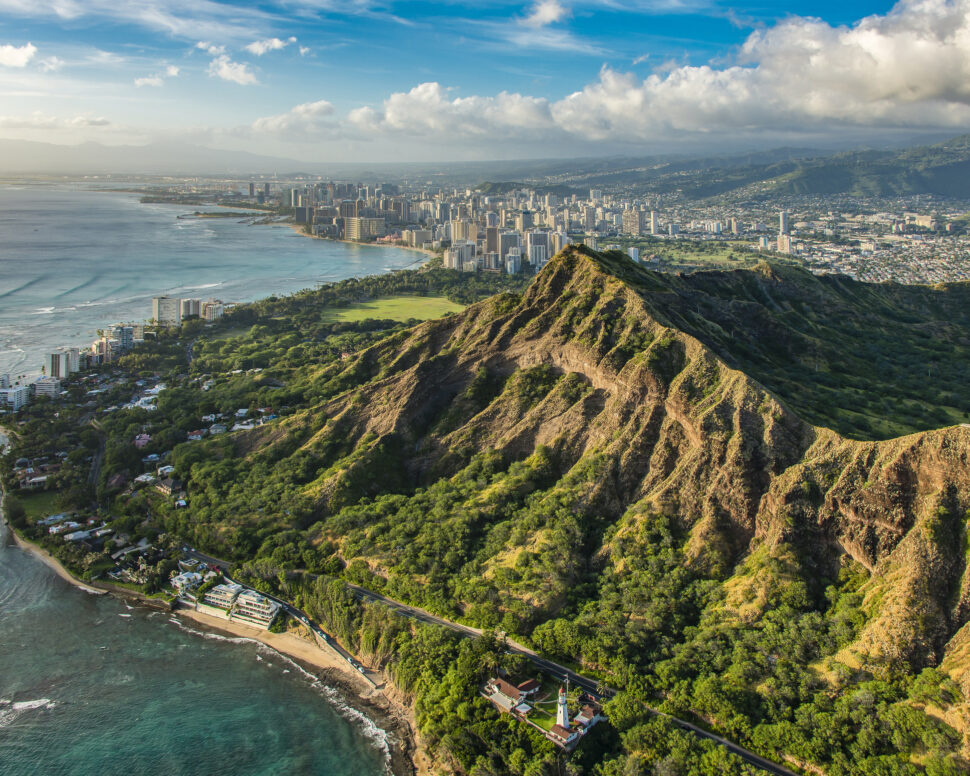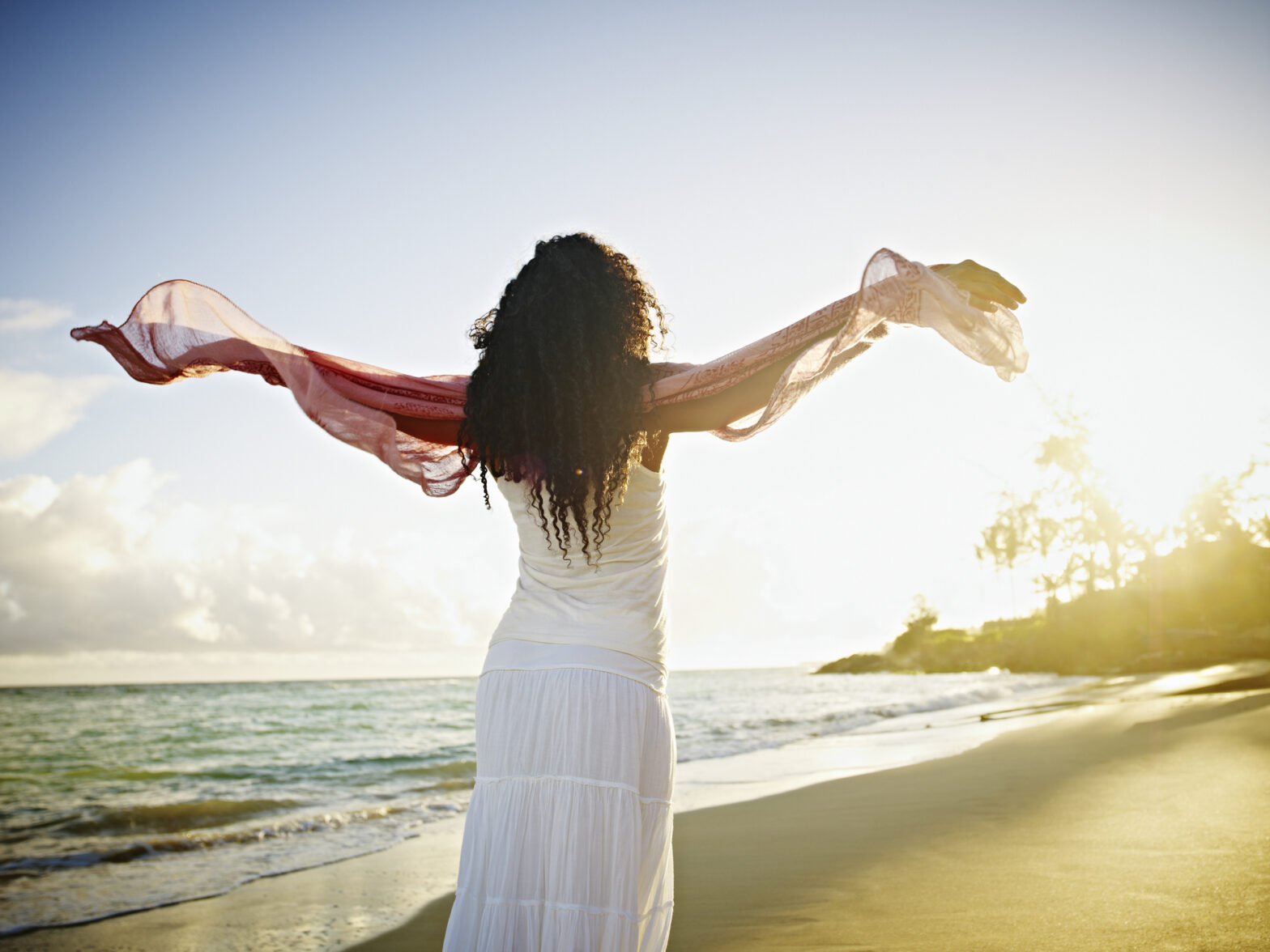Hawaii is one of the closest places to paradise, figuratively and literally for those who live in the United States. It is not only naturally stunning with its serene beaches, diverse wildlife and gorgeous climate, but it is rich with cultures preserved by its people who love their land so dearly. Hawaii consists of over one hundred different islands but is recognized by its eight main islands of Hawaiʻi, Maui, Kahoʻolawe, Lānaʻi, Molokaʻi, Oʻahu, Kauaʻi and Niʻihau.
Getting to visit one of these islands is a great privilege and an opportunity to make wonderful memories. So much so that you are likely considering everything to make sure all of your packing is in order. To help with that, here is a guide on what to wear in Hawaii based on the climate of the island you decide to visit and the different kinds of activities you plan on doing.
The Complexity of Tourism in Hawaii
Before getting into what to wear in Hawaii, Hawaii has a complex relationship with tourism that is important to acknowledge. There have been several catastrophic events such as earthquakes, droughts and wildfires over the past few years on the islands, as well as a very high poverty rate for its native people. However, the country still sees millions of tourists flying in every year to enjoy lavish vacations in the land they call home.
Many native Hawaiian people have been consistently pleading with tourists to stop traveling to the islands due to the crises its people have been facing. As well as the fact that more tourists means more of their sacred land has to be destroyed. This brings along the displacement of natives to provide accommodations, as well as other problems that arise from foreigners moving onto its islands. However, the economy and other Hawaiian natives say otherwise. According to AS USA, Hawaii’s economy is very dependent on tourism with a quarter of its revenue coming from tourism in 2019, and with places like Maui depending on it for 80% of its revenue. So, even the native Hawaiian people that want tourists to vacation elsewhere may not be able to afford to have this happen, literally.
This is not intended to make anyone feel guilty for traveling to these beautiful islands, but to pay respect to those that call them home. The situation is too complicated to say whether you should or should not visit Hawaii. Instead, look into local news from the island you wish to visit and research ways to sustainably travel there and respect its people.
Consider the Climate When Packing What To Wear

Hawaii has a tropical climate characterized by consistently warm temperatures, high humidity and abundant rainfall, with relatively minor seasonal variations. It’s basically perfect year round. However, there are some conditions you are going to want to prepare for, especially depending on what island you are visiting.
Warm Temperatures Plus High Humidity
Temperatures in Hawaii typically range from the mid-70s to mid-80s Fahrenheit (24-30 degrees Celsius) year-round. However, temperatures can vary depending on the elevation and time of day. Sunscreen is essential. Additionally, due to its location in the tropical Pacific Ocean, Hawaii experiences high humidity levels, especially in coastal areas. The humidity can make the air feel warmer and more sticky, particularly during the summer months.
Trade Winds
Hawaii benefits from trade winds that blow consistently from the northeast. These winds help moderate temperatures and provide relief from the heat, especially on the windward (northeastern) sides of the islands.
Rainfall
Hawaii receives a significant amount of rainfall, particularly in the winter months (November to March) when the islands experience their rainy season. The windward sides of the islands receive the most precipitation due to orographic lift, where moist air is forced upward by mountains, leading to cooling and condensation. Be sure to bring a poncho or rain gear when traveling during this season.
Microclimates and Seasonal Variations
Despite its small size, Hawaii features diverse microclimates due to variations in elevation, topography and exposure to trade winds. For example, while the windward sides of the islands are lush and green, the leeward (southwestern) sides tend to be drier and sunnier. While Hawaii’s climate is relatively consistent throughout the year, there are some seasonal variations. The summer months (June to September) tend to be warmer and drier, while the winter months (December to March) are slightly cooler and wetter. Be sure to bring a nice sweatshirt and jacket during the cooler months, even if you expect it to be warm.
What To Wear in Hawaii
Lightweight clothing: Pack lightweight, breathable fabrics like cotton, linen or moisture-wicking materials to stay cool and comfortable in the warm weather. Dry-fit or work out material clothing is great for outdoor adventures.
Swimwear: Don’t forget to pack your swimsuits or bikinis for enjoying Hawaii’s beautiful beaches and water activities. You can pretty much swim in Hawaii all day everyday, so packing at least two swimsuits is advisable so one can be drying while you wear the other.
Sun protection: Bring along a wide-brimmed hat, sunglasses and sunscreen to protect yourself from the strong Hawaiian sun. A loose, long sleeved flannel or short is advised by many travelers to cover the arms from sun exposure when doing outdoor activities.
Casual attire: Hawaii has a laid-back vibe, so casual attire like shorts, sundresses, t-shirts and sandals are appropriate for most occasions. These items are perfect for dinners, luaus, sight-seeing and more.
Cover-ups: If you plan to visit religious sites or want extra coverage from the sun, consider packing lightweight cover-ups or sarongs. Additionally, if you do not know what to wear in Hawaii and do not want to have to put together a bunch of outfits, cover-ups are a great versatile option.
Footwear: Comfortable walking shoes or sandals are essential, especially if you plan to explore the islands on foot. Most tourists would probably tell you not to bother packing heals. Closed toed shoes are a requirement for activities like hiking.
Rain gear: Again, while Hawaii is generally sunny, it’s also known for its occasional rain showers. Consider packing a lightweight rain jacket or umbrella just in case. A compact, travel rain poncho is also very handy to have in a bag with you at all times.
Evening wear: For evenings out or dining at nicer restaurants, you might want to pack slightly dressier attire, such as a sundress or casual button-down shirt. It is not guaranteed you will need these items as the islands are generally laid-back, however they are great for pictures and to have just in case.
No jeans: This is a guide on what to wear in Hawaii, but what you are not going to want to where is denim jeans. The material will likely feel heavy and thick, causing you to overheat. Even if it is cooler, the material being too heavy is not practical. Denim shorts may suffice, but more breathable materials will work better.
